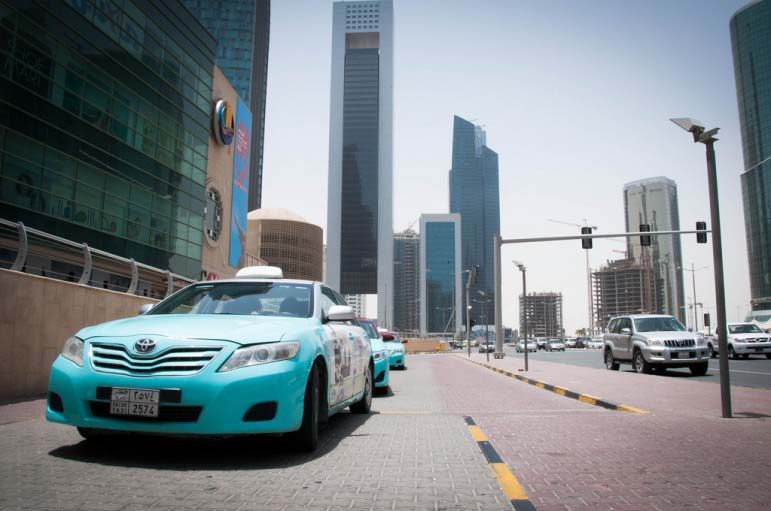Following a slew of complaints from Qatar residents about poor treatment from taxi drivers, a local journalist looked into the reasons why so many have been pushing the limits. Here’s what she found.
By Jessica Davey-Quantick
I’m sitting in the backseat of a Karwa taxi, parked in my driveway on a Thursday afternoon. My driver is in tears. I’ve just handed him QR500. It’s more than he’s made all week. He’s about the same age as my dad, and he’s broken down crying because I’ve slipped him what I’d spend on a Thursday night out or a bubbly brunch.
This is the second time I’ve met this driver, who is too scared of repercussions to let me tape-record our interview, let alone name him in print. Let’s call him Steve. He’s from India, and works as a driver in Qatar to support his three children and wife back home. The first time I met him, I was arguing with him to turn the meter on.
“Ok, no meter, ok,” he said, nodding his head. “40 riyal.” I know for a fact the trip costs QR15, in traffic.
Like many expats, I’m frustrated, I’m angry, and I’ve had just about enough of cab drivers demanding double or triple the usual fare. But this time, I ask him why.
Turns out – he just wants to eat that day.
“Some days, I make QR100, QR50, QR10. Some days, I make nothing,” he said.
Steve is a rental driver, which means he pays QR265 rent his taxi in 11-hour shifts, and keeps the rest of his fares. He shows me his receipt for that day – he started at 7:30am, and by 4:30pm he hadn’t made the QR265 he’d need to rent the car tomorrow.
No money, no car
“If he does not bring in the money, he cannot take the car,” said Nasser Al Khanji, Strategy and Business Development Director at Mowasalat, the transport company that operates Karwa.
“That’s the rental concept. I’m not going to give you the key. If you want to rent the car and go and make money, you have to give me the amount,” he added.

Though it hasn’t been able to keep pace with the growing population, Qatar’s public transportation is expanding frantically.
In addition to the mint green Karwas, Mowasalat has granted licenses to three different franchisees, including Al Million, which launched 500 maroon-roofed taxis onto Qatar’s streets over the past year. Add to that Al Ijarah (with the blue roofs), the combined taxi fleet in Qatar is nearing 3,000. And this month, yellow-roofed Petro Qatar will enter the fray.
Most of the drivers of these taxis come from the Philippines, India and Nepal, with a smattering of other nationalities filling the ranks as well.
Two schemes
According to Al Khanji, the drivers work according to two schemes. The first one gives them a fixed salary during their first six months of training.
But because the cost is high to Mowasalat, drivers who pass their training are then moved to the rental scheme.
“They pay a fixed amount every day and they take the key and they go on the road,” Al Khanji said.
Many drivers said they are reluctant to switch from salary to rental. One, who again declined to be named for fear of retribution, said he wasn’t given a choice; another said he wasn’t told when he was hired that he would eventually be moved off a salary.
Either way, all the drivers I speak with tell me the pressure to make any money at all, once they’re off salary, is what’s behind their reluctance to use the meter.
Al Khanji said:
‘If you’re talking about new drivers – new to Doha – then they will be reluctant to shift to rental. Sometimes we push them because they’re content with a fixed amount, they don’t want to make more.
When they talk to the rental drivers and they see how much they earn, and they see they are given the opportunity to be in high-demand shifts, it seems an easy thing for them to do. We keep a quota when it comes to shifts and rental divers, this is our secret recipe when it comes to balancing things really.”
‘Tricking’ passengers
“I don’t want to beg,” said one driver, who is from the Philippines and was recently switched off salary. He said he doesn’t like to “trick” passengers into paying higher fares, but he will try to convince them to pay a little more by explaining his situation. But for him, he said, it feels like begging to be paid a fair wage.

Al Khanji, however, asserted that the average rental driver should easily be able to meet his quota. He tells me drivers work six days a week, in 11 hour shifts, including a one-hour break the driver can take at his own discretion, either broken up or in a block.
“We make sure that we put the rental drivers in peak times, so we play with the schedule so this way they can earn the maximum they can. We follow some disciplinary processes here for under-performers, but the amount is not challenging, you know.”
He added:
“We make sure that we provide the opportunity for them, and they can earn their daily amount. We don’t have hard figures for rental drivers, but for rental we expect about QR450 in a day, on average. So multiply by 26 and you get the figure (for the month). Salary drivers are QR250 (per day).”
Grim numbers
According to those numbers, a salaried driver would make QR6,500 a month, while rental drivers would make QR11,700, or QR4,810 once they’ve paid for their cabs each day.
However, in order to make QR450 a day, they’d have to make QR41 per hour. If they actually want to take their one-hour break to eat, stretch their legs, or use the restroom, they’d have to make QR45 per hour. An analysis of taxi receipts shows that the average taxi fare in Qatar is QR20, with each trip taking approximately 30 minutes.

To reach the company’s estimated daily earnings, they would have to have one trip every half hour for their entire 11-hour shift, with no breaks and no lulls between passengers, lower fares, or longer trips.
Wait in a taxi queue, get stuck in traffic, have an empty cab between passengers or dare to stop to go to the bathroom, and they won’t meet that minimum.
“They just want the money,” said Steve of Mowasalat, slashing his finger across his throat. “I could murder someone to get money, they wouldn’t care, as long as they got it.”
Simple requests
Before moving to Qatar, Steve worked as a private driver in Saudi Arabia. Another driver, from Nepal, also spent time in the Kingdom before working as a taxi driver in Dubai. Both agree: Doha is harder.
Still, none of the drivers I spoke to were demanding radical changes. Instead, some simply wanted to stay salaried, guaranteed a minimum amount of money each day, to support themselves and their families. One suggested lowering the daily rental fee to allow drivers to keep more of their earnings.
And some argued that switching from a kilometer-based fare to a time-based fare would help.
Qatar’s population is hovering near the 2 million mark, a number it wasn’t expected to reach until 2016. Some 61,666 more vehicles were added to the streets last year, an increase of 7.6 percent from 2011. That brings the total number of vehicles up to 879,039 – more than 200,000 more cars than in 2010.
For taxi drivers, that increase translates into QR15 for spending an hour slogging through gridlock.
“If I get paid for my time, ok,” said one driver, from Kerala. He’s a trained computer engineer, but took a job as a taxi driver to try to make some money when he couldn’t find work in his field. He’s already planning to go home. “I just want it (to be) fair.”
Steve agrees. He says with the current system, although Mowasalat offers housing, a medical clinic and other resources, he simply can’t afford to take a day off. “I have pain in back, (I’m) sick, (but) I can’t take off,” he said.
Choosy drivers
Under these conditions, drivers are starting to pick and choose which trips they’ll take, deliberately trying to avoid low fares that will take up too much time. Al Khanji said this is common all over the world.
The drivers also know that if they return to the depot late, even if it’s because a fare took longer than expected, they’ll be penalized.
But drivers say they’re not just being selective about their routes. One older driver, who’s been working in Qatar for over six years, said he avoids teenagers, claiming they often leap from the car and refuse to pay the fare.
Al Khanji said when that happens, it’s not the company’s responsibility.
“They can call us, but we can’t do much about it really,” he said. “They go to the police and get it reported.”

Passengers, however, have more recourse. Mowasalat has long made it known that if the meter isn’t turned on, the trip is technically free. Recently, posters with this information have been splashed across the cars themselves to inform passengers of their rights.
“It’s putting the responsibility on the customer,” Al Khanji said.
But there is no grievance system for drivers who are mistreated. Steve, like many other drivers I speak to, said he’s regularly treated rudely by customers.
But quitting just isn’t an option. He’s been here for five years, and although he is often unhappy with his salary and his treatment, he said he just can’t leave yet.
“This is my life. It is hard life. I pray to God.”
Thoughts?
Credit: Photos by Penny Yi Wang; Lawrence Wang; Isabell Schulz and Images of Money








